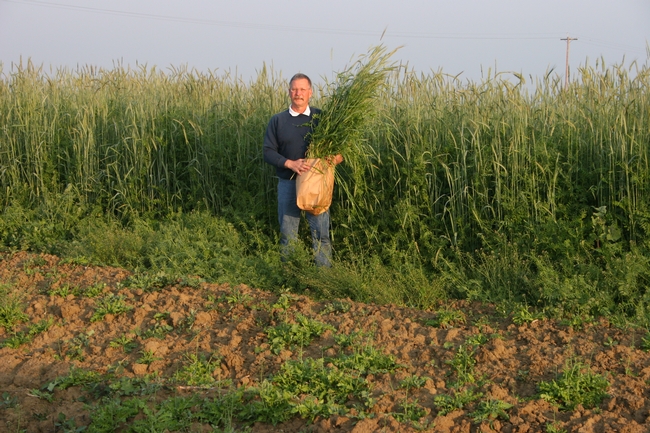New data on cover crops to be shared in July 23rd Desert Southwest Soil Health Webinar!
Information on the dynamics of long-term use of winter cover crops in California's San Joaquin Valley will be shared with online participants as part of the Desert Southwest Soil Health Webinar (https://www.eventbrite.com/e/desert-southwest-soil-health-webinar-tickets-107732693386), slated for July 23rd from 8 AM through 6 PM.
“This will be one of the first outlets in which we'll share our 20-year findings on both the costs and benefits of using cover crops to improve agroecosystem biodiversity and the efficiencies of the C, N, and water cycles in SJV annual cropping systems,” says UC ANR's Jeff Mitchell, whose presentation on conservation agriculture falls in the 10:30 AM – 3:00 PM “Practices to improve soil health,” slot on the day-long program.
Mitchell will describe how over the course of the project that was characterized by recurring drought, a total of 37 tons of aboveground cover crop biomass representing 1580 lbs N and 14.8 tons C per acre was produced with a total precipitation of 127 inches and 16 inches of supplemental irrigation in that was applied in four of the years. These inputs averaged 3,695 lbs of organic matter or 0.79 tons of C annually. Year-to-year variability was quite large ranging from 8,818 lbs OM in 2000 when supplemental irrigation was applied, to 54 lbs/ac in 2007 when, as in most years, no irrigation was applied to the cover crops. The cover crops were typically seeded by November 15 and terminated around March 15 of the following year accounting for a growth period of 120 days capturing solar energy by the “green ground cover”, and living roots in the soil for about 90 additional days during the year relative to the standard practice system which was bare during this time. Based on cover crop growth during years when supplemental irrigation was applied, Mitchell estimates that an average of 6,082 lbs of dry cover crop biomass might have been produced with a modest input of 2 inches of water. Even greater amounts of cover crop biomass – approximately 12,000 lbs of dry matter per acre as is typically achieved with winter silage triticale crops in SJV dairies - could be produced were cover crops “treated more like cash crops” with additional supplemental strategically timed irrigation in a cropping system as in other regions of the US. He'll also be showing participants via recorded video clips just how this sort of sustained cover crop use improves key soil health indicator properties and function.
CCA and PCA credit for the online webinar have been requested.
Photo caption
Image_0320
UC ANR Cropping Systems Extension Specialist, Jeff Mitchell, shown sampling winter cover crop aboveground biomass in longstanding conservation agriculture study of the impacts of reduced disturbance, cover crops, and surface residues on soil function, productivity, and ecosystem services at the Conservation Agriculture Systems study site in Five Points, CA
New data on cover crops to be presented July 23rd!
